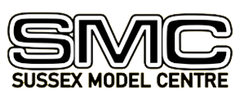Veron Tru-Flite Swordfish Kit - VR21
Veron Tru-Flite Swordfish Kit - VR21 will be backordered from our supplier. Delivery will take between 3-5 working days & orders will be despatched once completed.
Sign up to be the first to know when this product is back in stock!
Description
Description
Veron Tru-Flite Swordfish Kit - NEW
This as an original kit, boxed with plan, instructions, prop, wheels, tissue etc.
Traditional build balsa kit, stringers and wing construction (ribs require cutting)
Wingspan: 18"
Additional items are required to complete kit as illustrated
Payment & Security
Payment methods
Your payment information is processed securely. We do not store credit card details nor have access to your credit card information.


